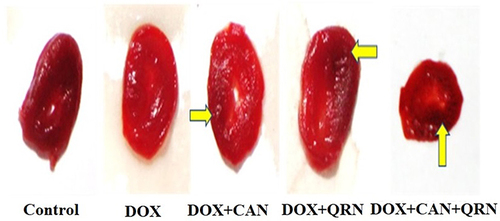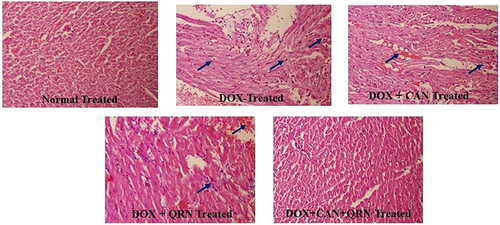Figures & data
Table 1 Route, Dose and Description of Drug Administration
Table 2 Effect of CAN, QRN and CAND+ QRN on Heart/Body Weight Ratio
Table 3 Effect of CAN, QRN and CAND+ QRN on Plasma Markers of Cardiac Damage
Table 4 Effect of CAN, QRN and CAND+ QRN on Antioxidant Level
Table 5 Effect of CAN, QRN and CAN+ QRN on Cardiac LPO Levels and NO Level
Table 6 Effect of CAN, QRN and CAN+QRN on Plasma Lipid Profile
Table 7 Effect of CAN, QRN and CAN+QRN on Plasma Lipid Profile and Serum Troponin-T Levels


